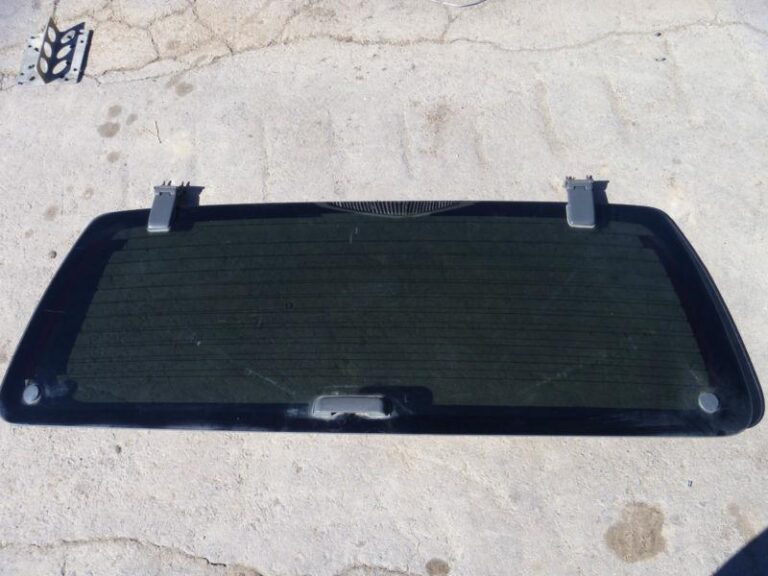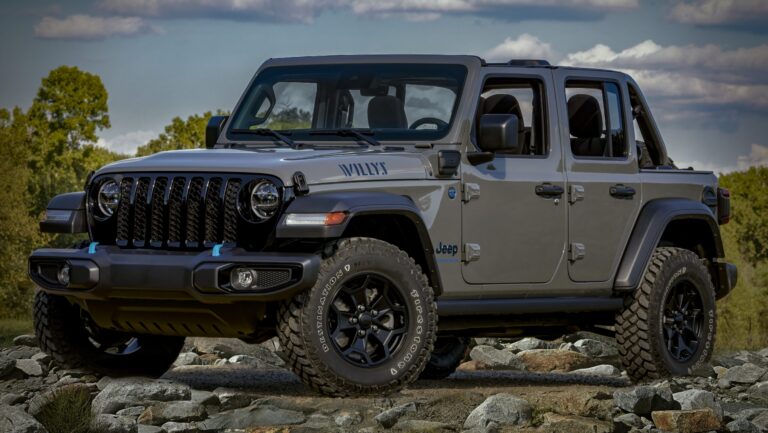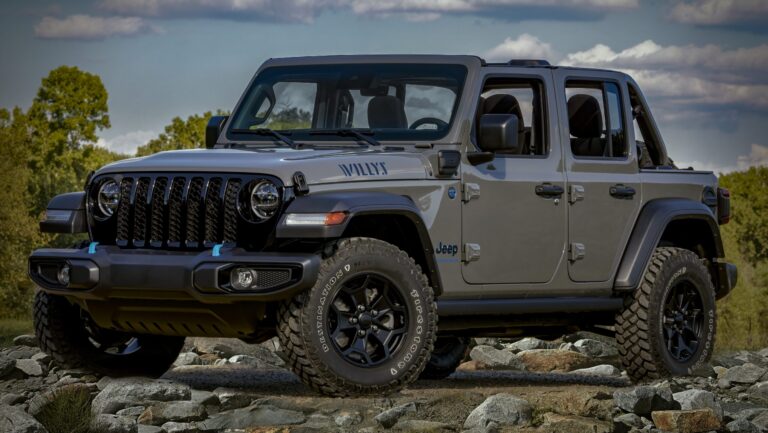2006 Jeep Commander 3.7 Engine For Sale: A Comprehensive Guide
2006 Jeep Commander 3.7 Engine For Sale: A Comprehensive Guide jeeps.truckstrend.com
The 2006 Jeep Commander marked a significant moment for the iconic American brand, introducing a full-size, seven-passenger SUV that blended classic Jeep ruggedness with family-friendly practicality. At the heart of many of these vehicles, particularly the Sport and some Limited trims, was the dependable 3.7-liter PowerTech V6 engine. For owners of a 2006 Jeep Commander facing engine trouble, or for enthusiasts embarking on a restoration project, the search for a "2006 Jeep Commander 3.7 engine for sale" becomes a critical quest. This comprehensive guide will navigate the intricacies of finding, evaluating, and purchasing the right replacement engine, ensuring your Commander gets a new lease on life.
Understanding the 3.7L PowerTech V6 Engine
2006 Jeep Commander 3.7 Engine For Sale: A Comprehensive Guide
The 3.7-liter SOHC (Single Overhead Cam) PowerTech V6 engine, designated as the "EGJ" by Chrysler, was a workhorse for the Jeep, Dodge, and Mitsubishi lineups for nearly two decades. Introduced in 2002, it quickly became a staple in vehicles like the Jeep Liberty, Grand Cherokee, Dodge Dakota, Ram 1500, and, of course, the Commander.
Key Specifications:
- Displacement: 3.7 liters (226 cubic inches)
- Configuration: SOHC V6
- Horsepower (2006 Commander): Approximately 210 hp at 5,200 rpm
- Torque (2006 Commander): Approximately 235 lb-ft at 4,000 rpm
- Block Material: Cast iron
- Head Material: Aluminum

Reputation and Common Issues:
The 3.7L V6 generally enjoys a reputation for being a robust and reliable engine, capable of enduring high mileage with proper maintenance. However, like any engine, it has its quirks and common failure points. Owners should be aware of potential issues such as:
- Valve Seat Recession: Particularly in earlier models, though less common by 2006, this can lead to loss of compression.
- Oil Sludge: Primarily due to extended oil change intervals or using the wrong type of oil, sludge can block oil passages and cause premature wear.
- Cooling System Issues: Overheating can lead to head gasket failure or warped cylinder heads.
- Timing Chain Wear: High mileage engines may exhibit timing chain stretch, leading to noise or performance issues.


Despite these potential challenges, a well-maintained 3.7L V6 can last well over 200,000 miles, making it a viable candidate for replacement rather than scrapping the entire vehicle.
Why Buy a Replacement 2006 Jeep Commander 3.7 Engine?
The decision to replace an engine is significant, often driven by a few key scenarios:
- Catastrophic Engine Failure: This is the most common reason. A seized engine, a broken connecting rod, severe knocking, or irreparable internal damage makes replacement the only option.
- High Mileage and Excessive Wear: While the 3.7L is durable, hundreds of thousands of miles can lead to excessive oil consumption, loss of power, or persistent issues that are more costly to repair individually than replacing the entire unit.
- Cost-Effectiveness vs. Vehicle Replacement: For a vehicle like the 2006 Jeep Commander, which holds sentimental value or whose body and interior are still in excellent condition, replacing the engine is often significantly cheaper than purchasing a comparable used SUV.
- Restoration Projects: Enthusiasts looking to restore a vintage Commander to its former glory will often seek a reliable engine to complete their build.
Types of 2006 Jeep Commander 3.7 Engines Available for Sale
When searching for a replacement engine, you’ll generally encounter three main categories, each with its own advantages and disadvantages:
1. Used/Salvaged Engines
These engines are pulled directly from other vehicles, typically from junkyards or salvage yards.
- Pros: Most affordable option. Can be a quick solution if found locally.
- Cons: Unknown history and maintenance records. Risk of hidden issues. Often comes with limited or no warranty. Mileage can vary wildly.
- Where to Find: Local junkyards, auto salvage yards, online marketplaces (eBay, Craigslist, Facebook Marketplace), specialized used auto parts websites.
- What to Look For:
- Donor Vehicle Information: Year, make, model, VIN of the vehicle it came from.
- Mileage: Lower mileage is generally preferred.
- Visual Inspection: Look for signs of external damage, oil leaks, cracks in the block or heads.
- Compression Test (if possible): A healthy engine should have consistent compression across all cylinders.
- Warranty: Even a short 30-day warranty can provide some peace of mind.
2. Rebuilt/Remanufactured Engines
These engines have been disassembled, inspected, cleaned, and had worn or damaged components replaced with new or reconditioned parts. They are then reassembled to original factory specifications.
- Pros: Much higher reliability than used engines. All critical wear parts (pistons, rings, bearings, seals, gaskets) are new. Often come with a substantial warranty (e.g., 1-3 years, unlimited mileage). Offers "like-new" performance without the "new" price tag.
- Cons: More expensive than used engines. May require a "core charge" (a deposit returned when you send back your old engine).
- Where to Find: Specialized engine builders, reputable auto parts store chains (NAPA, AutoZone, O’Reilly via their remanufacturing partners), online engine suppliers.
- What to Look For:
- Warranty Details: Understand what is covered and for how long.
- What’s Included: Does it come with accessories (manifold, throttle body, etc.) or is it a long block only?
- Rebuild Process: Inquire about the quality control and specific parts replaced.
- Core Charge: Be clear on the amount and return policy for your old engine.
3. New Crate Engines
These are brand-new engines, typically from the original equipment manufacturer (OEM) or a licensed aftermarket producer.
- Pros: Ultimate peace of mind, full factory warranty, guaranteed compatibility and performance.
- Cons: Most expensive option. For a 2006 model, finding a truly "new" 3.7L crate engine can be rare; many listed as "new" are actually remanufactured.
- Where to Find: OEM dealerships (though unlikely to stock full engines for older models), specialty performance shops, some online retailers.
Key Considerations Before Purchasing
Before you commit to buying, keep these crucial factors in mind:
- Budget: Determine your absolute maximum expenditure. This will largely dictate whether you opt for a used, rebuilt, or potentially new engine.
- Warranty: This is paramount. A good warranty (especially on rebuilt or used engines) can save you significant headaches and costs down the line. Understand its terms, coverage, and duration.
- Mileage (for used engines): Lower mileage is always better, but a well-maintained higher-mileage engine can still be a good buy. Try to get verifiable mileage.
- Seller Reputation: Purchase from reputable sellers with positive reviews and a clear return policy. Avoid sketchy deals.
- Compatibility: While the 3.7L is relatively standard, minor variations (e.g., sensor locations, accessory mounting points) can exist between model years or applications. Confirm the engine is specifically for a 2006 Jeep Commander. Providing your VIN can help the seller ensure compatibility.
- Shipping & Logistics: Factor in shipping costs, delivery time, and how the engine will be offloaded upon arrival.
- Installation Costs: If you’re not doing a DIY swap, get quotes from mechanics for installation. This cost can sometimes exceed the engine’s price.
The Buying Process: A Step-by-Step Guide
Follow these steps for a smooth and successful engine purchase:
- Thorough Diagnosis: Before anything else, ensure your current engine is indeed beyond repair. A certified mechanic should perform a comprehensive diagnosis to confirm the issue.
- Set Your Budget and Engine Type: Based on your diagnosis and financial capacity, decide whether a used, rebuilt, or new engine is the best fit.
- Research Sellers: Explore options from local salvage yards to national remanufacturers and online marketplaces. Read reviews and compare offerings.
- Ask Detailed Questions: When contacting sellers, inquire about:
- Engine mileage (for used).
- What’s included (long block, short block, accessories?).
- Compression test results (for used, if available).
- Warranty terms and duration.
- Core charge requirements.
- Shipping costs and estimated delivery.
- Inspect (If Possible): If buying locally, physically inspect the engine for damage, leaks, or signs of neglect.
- Confirm Compatibility: Double-check part numbers or provide your vehicle’s VIN to the seller to ensure the engine is a direct fit for your 2006 Jeep Commander.
- Arrange Purchase & Shipping: Use secure payment methods. Get tracking information for shipped engines.
- Plan for Installation: Have your mechanic ready or prepare your tools and workspace for a DIY swap.
Tips for a Successful Engine Swap
Replacing an engine is a major undertaking. Here are some tips to ensure success:
- Replace Associated Components: It’s highly recommended to replace the water pump, thermostat, spark plugs, belts, hoses, and motor mounts when installing a "new" engine. These are relatively inexpensive parts that are easily accessible during an engine swap.
- Fresh Fluids: Use all new engine oil, coolant, and power steering fluid. Consider flushing the transmission cooler lines.
- Clean the Engine Bay: Take the opportunity to thoroughly clean the engine bay and inspect all wiring harnesses and connectors for damage.
- Prime the Oil System: Before the first start, disable ignition and crank the engine (or use a priming tool) to build oil pressure and circulate oil throughout the engine. This prevents dry starts and reduces initial wear.
- Follow Break-In Procedures: If you purchased a rebuilt or new engine, adhere strictly to the manufacturer’s recommended break-in period, which usually involves specific driving habits and an early oil change.
Potential Challenges and Solutions
- Challenge: Finding a Reliable Engine: The market is flooded with varying quality.
- Solution: Stick to reputable sellers, ask for detailed information, and prioritize engines with warranties.
- Challenge: Hidden Issues in Used Engines: A used engine might seem fine but develop problems shortly after installation.
- Solution: Opt for engines with at least a short-term warranty. Get as much history as possible, including if it was tested before removal.
- Challenge: Installation Complexities: Engine swaps are complex and time-consuming.
- Solution: If you’re not an experienced mechanic, hire a certified professional. Get multiple quotes and check their experience with Jeep vehicles.
- Challenge: Core Charge Return: For rebuilt engines, returning your old engine can be a hassle.
- Solution: Understand the core return policy, packaging requirements, and timeline upfront. Keep all documentation.
2006 Jeep Commander 3.7 Engine For Sale: Estimated Price Guide
Please note that prices are highly variable based on location, seller, engine condition, mileage, and current market demand. This table provides estimated ranges in USD and should be used as a general guide.
| Engine Type | Condition/Description | Estimated Price Range (USD) | Typical Warranty | Key Considerations |
|---|---|---|---|---|
| Used/Salvaged | High Mileage (100k+ miles) | $800 – $1,500 | 30-90 days | Unknown history, higher risk, inspect thoroughly. |
| Low Mileage (Under 100k miles) | $1,500 – $2,500 | 30-180 days | Better chance of reliability, still inspect/test. | |
| Rebuilt/Remanufactured | Long Block (Engine only, no accessories) | $2,500 – $4,000 | 1-3 years / Unlimited | "Like new" performance, core charge often required, verify what’s included. |
| Complete (with some accessories) | $3,500 – $5,000+ | 1-3 years / Unlimited | More expensive, but reduces installation complexity, core charge likely. | |
| New Crate | OEM or New Aftermarket (Rare for 2006) | $5,000 – $7,000+ | 3-5 years / Unlimited | Highest cost, highest reliability. Verify it’s truly "new" vs. remanufactured. |
| Installation Labor | Professional Mechanic (Avg.) | $1,000 – $2,500 | Varies by shop | Factor into total cost, includes fluids and minor parts. |
Note: These prices do not include shipping costs, core charges (if applicable), or the cost of new fluids and associated small parts (belts, hoses, spark plugs, etc.) that should be replaced during an engine swap.
Frequently Asked Questions (FAQ)
Q1: Can I put a 4.7L V8 engine in my 2006 Commander that originally had a 3.7L V6?
A1: While physically possible, it’s not a direct "bolt-in" swap. It would require significant modifications, including a different transmission, engine computer (PCM), wiring harness, exhaust system, and potentially cooling system upgrades. It’s a complex and expensive undertaking, usually only attempted by experienced custom builders. For most owners, sticking with the 3.7L is the most practical and cost-effective solution.
Q2: How much does it typically cost to install a 3.7L engine in a 2006 Jeep Commander?
A2: Professional installation labor can range from $1,000 to $2,500 or more, depending on the shop’s labor rate, location, and any unforeseen complications. This typically includes basic fluids but not major ancillary parts like the water pump or spark plugs, which you should replace.
Q3: What is the average lifespan of a 3.7L engine in a Jeep Commander?
A3: With proper and consistent maintenance (regular oil changes, cooling system flushes, timely sensor replacements), the 3.7L V6 can reliably last well over 200,000 miles. Some owners report them running strong past 250,000 or even 300,000 miles. Neglect, however, can significantly shorten its life.
Q4: Are there any common problems I should be aware of with the 3.7L V6 that could lead to another engine replacement?
A4: As mentioned earlier, watch for signs of valve seat recession (rough idle, misfires, loss of compression), oil sludge (due to infrequent oil changes), and overheating (which can warp heads or blow head gaskets). Proactive maintenance, like using the correct oil and coolant, and addressing minor issues promptly, is key to preventing major failures.
Q5: Do I need to replace anything else when I replace the engine?
A5: Yes, it’s highly recommended. At a minimum, replace the water pump, thermostat, spark plugs, all belts and hoses, and all fluids (engine oil, coolant, power steering fluid). Consider replacing the motor mounts, accessory drive components (alternator, AC compressor) if they are high mileage or showing signs of wear, and possibly the transmission cooler lines. This ensures the "new" engine isn’t stressed by old, failing components.
Conclusion
Finding a "2006 Jeep Commander 3.7 engine for sale" is more than just a transaction; it’s an investment in extending the life of a capable and cherished vehicle. By understanding the types of engines available, diligently researching sellers, asking the right questions, and budgeting for both the engine and its proper installation, you can navigate this process with confidence. A well-chosen replacement engine, coupled with diligent maintenance, will allow your 2006 Jeep Commander to continue its adventures for many years to come, proving that sometimes, the best path forward is to breathe new life into a trusted companion.






